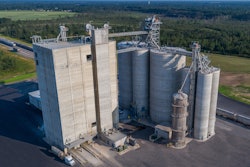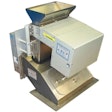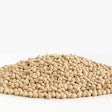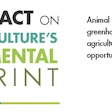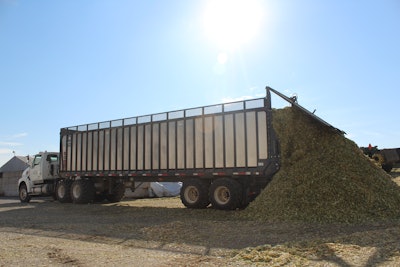
As historic as 2020 has been for life in general, it’s also brought about a silver lining of a seemingly adequate growing season for farmers when compared to years past. However, a ‘near-perfect’ growing season still comes with its necessary tweaks to harvest corn for ideal silage. The weather and environment in which corn is raised is just the beginning of a myriad of management considerations that harvesters should think about when the countdown to chopping whittles down to two weeks or less before go-time.
Current status
“有趣的是,在年adequate feed inventory and above-average yields, we typically have below-average forage quality,” explains John Goeser, Rock River Laboratory animal nutrition, research, and development director. This spring and summer’s heat units and moisture hit “good” on the growing spectrum, but what may prove great for the plant is actually not ideal for the feedstuff it becomes.
“Lignification is likely to be greater this year, and I’m hearing about above-average grain yields,” says Goeser. “These observations could boil down to less-than-ideal fiber digestibility.”
Remedies
Goeser shares that lignin is concentrated at the bottom of the corn plant – and as such, high-cutting corn for silage at harvest could help improve the fiber digestibility of the whole-plant corn silage that is made. “High cut means six to ten inches higher than normal – which can be various heights depending on the preference,” states Goeser. “This can go up to two feet high – yielding a feed that is similar to almost snaplage or earlage.”
The nutritional components of corn silage are affected by cutting height. Research has found that in high cutting height harvests, silage quality increased while dry matter yield decreased[1]. Goeser recommends starting from the “normal” cutting height of harvests in years past and going up from there.
Scouting fields is still an essential practice during a good growing year. “Walk corn and look at it from a plant health and condition standpoint,” advises Goeser. If feasible, he also recommends pulling the chopper out a few days early to chop a 100-foot run into the field at two to three different cut heights. “Take samples at each cutting height and send them into the lab for a nutritional measure to dial in your timeline and reap the rewards of expertly timed harvest.”
“Consider using the InField updates free tool for dry matter (DM), neutral detergent fiber (NDF), and starch measures to understand plant maturity as well as moisture in similar regions,” suggests Goeser. Another option is to cut numerous stalks out of the field, at different heights, chop them with a wood chipper or other means, and send a sub-sample to the laboratory.
Goeser also highlights strict attention to both milk line and moisture to time the harvest. “If the milk line advances past maturity, let it go a little further to hit moisture at the right time. Missing moisture and harvesting on the dry side can wreak havoc on the silage quality.” In such cases, he recommends shortening the cut length in an effort to save the crop’s potential.
Opportunities for Iowa corn
As Iowans all face the difficulties associated with the aftermath of the recent derecho storm, farmers, in particular, must look at all options available for their corn crops. “For corn that is snapped off and dead or dying, growers should speak with an agronomist to discuss what they can do at this point,” says Goeser. “Removing the plants from the field is the first priority in this type of situation. If it’s just lodged, corn is incredibly resilient and will likely gooseneck and stay alive.” In such cases, Goeser recommends networking with local grain farmers to help them in time of need, but also potentially salvaging what could be cheap feed. “If harvesting damaged fields in this region, scout the field prior to chopping - being mindful of remnants from the storm while also ensuring no employees are in the field when chopping has commenced.”
Founded in 1976,Rock River Laboratoryis a family-owned laboratory network that provides production assistance to the agricultural industry through the use of advanced diagnostic systems, progressive techniques, and research-supported analyses. Employing a team of top specialists in their respective fields, Rock River Laboratory provides accurate, cost-effective, and timely analytical results to customers worldwide, while featuring unsurpassed customer service.
[1] Ferraretto, L. F., R. D. Shaver, and B. D. Luck. 2018. Silage Review: Recent advances and future technologies for whole-plant and fractionated corn silage harvesting: A contemporary review. J. Dairy Sci. 101:3937-3951.





